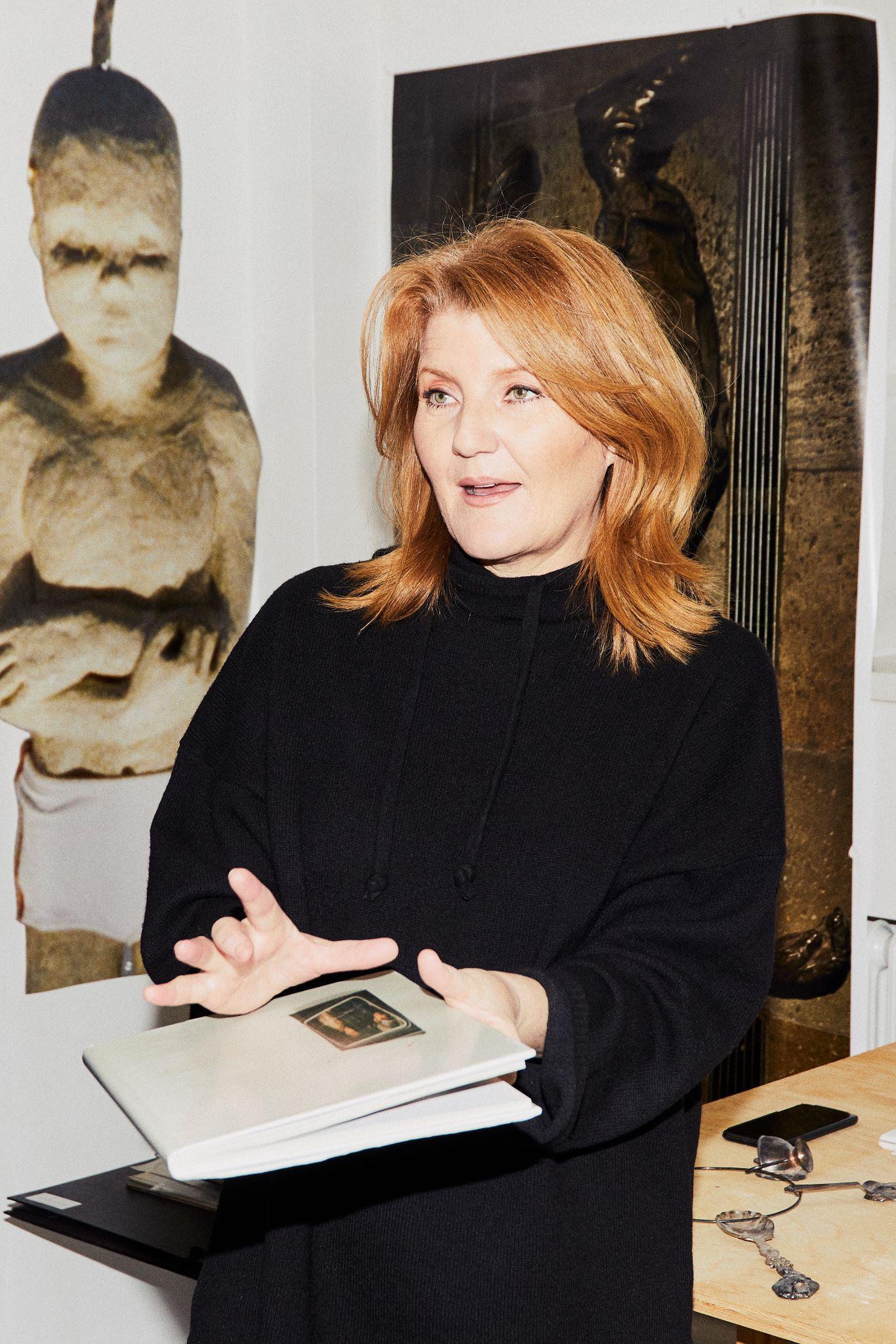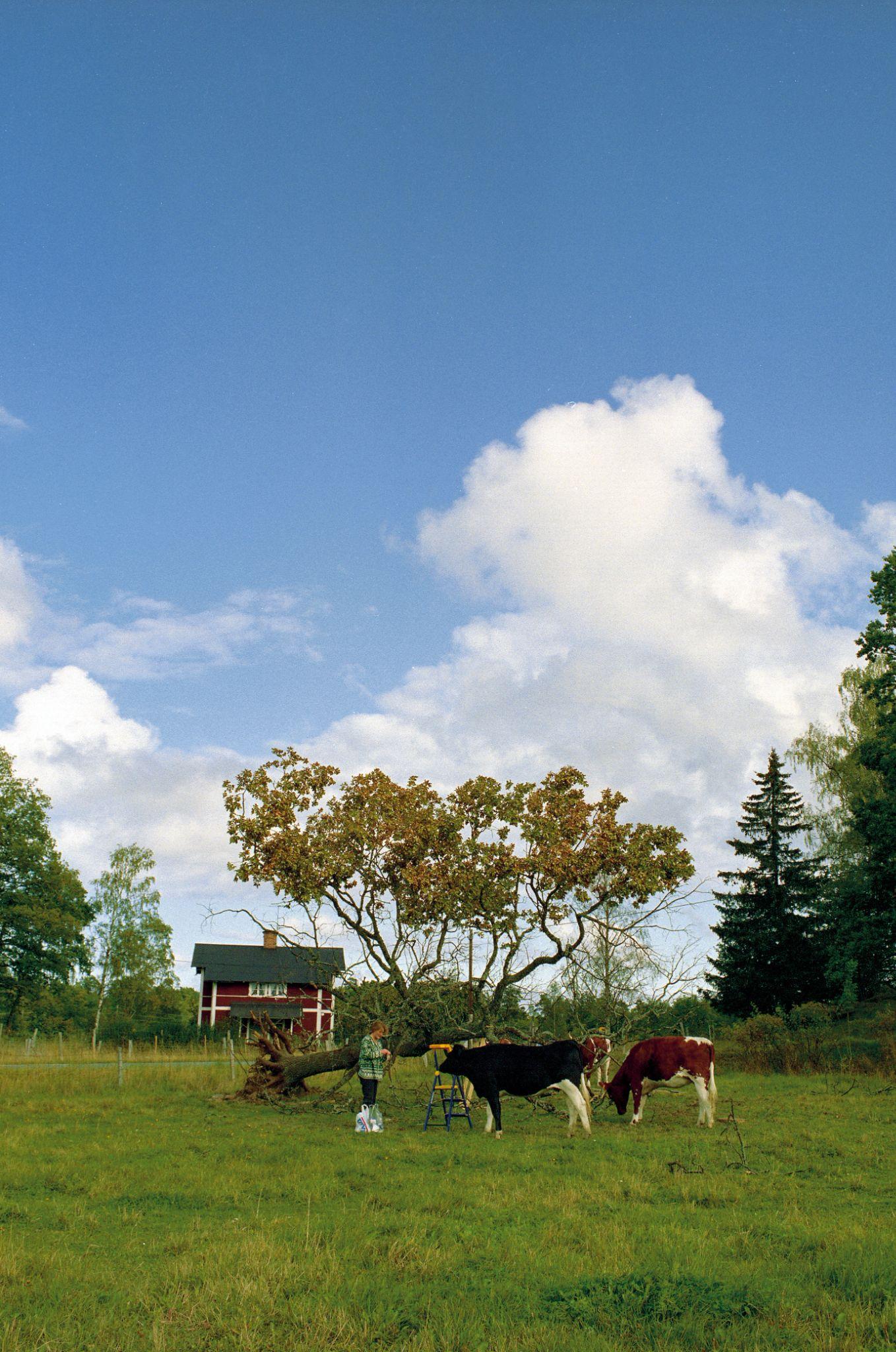Charlotte Gyllenhammar’s New Commission Whispers Primeval Power


Another bronze giant has risen in Stockholm’s national city park Djurgården. At first glance Charlotte Gyllenhammar’s sculpture Untold with its elongated, furry body and a hint of a long face makes me think of an abstract version of Tove Jansson’s character Fillyjonk from the Moominvalley. However, the aura of this figure is far from the cleaning-obsessed, pragmatic Fillyjonk. Instead, one could sense an air of mesmerizing mystery and a whisper of primeval power. The work joins three public art works by Alice Aycock, Elmgreen & Dragset, and Yinka Shonibare placed in the park by Princess Estelle’s Cultural Foundation (PREKS).
“The sculpture is a female creature, a mix between human, animal, and tree. The fur could also be seen as bark.” Gyllenhammar tells me over coffee, a week before install. This is my second interview with the artist, last time we met we spoke about her solo-show at Prins Eugen Waldemarsudde. This time we met at Paula’s, a café in the historical gourmet food market hall Östermalmshallen. Seeing her again, I make a mental note confirming that she is in fact the most well-dressed artist I have ever met, (and readers, I have lived in Milan!)—meticulous elegance, impressive in every detail. “Marni,” she offers when I ask her about her bag.


The precision in her dress is reflected in her work. “The foundation gave me a couple of places to choose from in Djurgården and I chose this semi-hidden grove of beeches. In the summer it is a space surrounded by vegetation, like a room. The color of the silver-green leaves and the light grey color of the tree trunks, which also make me think of elephants, splendidly frame Untold.“ Later when I visit Untold situated on a leafy slope in the park the sculpture that measures about four meters high grips me with its positive enigmatic presence, just like Gyllenhammar herself.
One of Sweden’s most celebrated artists, suitably, Gyllenhammar is the first Swedish artist to be chosen by PREKS to create a permanent work for the foundation’s sculpture park. The piece is cast in bronze and then patinated and coated with wax which gives it its subdued metallic hue. “I love casting. In fact, while I was in school I did a lot of casting. I experimented with materials such as aluminum, bronze, concrete, and iron,” the artist tells me. “Everything but paint,” is how Gyllenhammar describes her artistry. Yet, painting was her primary medium when she went to the Royal Institute of Art in Stockholm in the 1980s. Since then, her body of work has shifted away from the medium toward installation, site-specific work, sculpture, photography, and film. The latter which she refers to as “breathing paintings” preserves some of the ethos of her former medium.

She broke through in 1993 with the installation Die for You, where she suspended a 120-year-old oak, upside down, over Stockholm’s largest shopping street Drottninggatan. “It floated,” she said. Her daredevil spirit comes forth when I ask if she is afraid it might fall: “Yes, of course,” she responded matter-of-factly in her cheeky Scanian drawl. Tension is hidden within each of her works.
Another reoccurring feature in your artistry, apart from the inversed perspective, is your play with different scales.
My over-dimensioned works are particularly wonderful, and my miniatures have their own place in the process. Sometimes I do the model or miniature last. In a way, it confirms the existence of the original work, almost like an anchor. Additionally, the displacement of scale has something to do with time. Particularly the larger works transport the viewer somewhere else, it is very liberating, it feels like they expand time as well as scale, like entering another era or room.
You see all your works as a unit, almost in the way that a musician makes an album. Untold is a continuation of your earlier casted works, above all Fury, a female figure that crashes down in rage, dressed in fur.
In Untold the falling figure from Fury has risen in its own majestic posture and taken the form of a giant. I got very fascinated by fur since it also creates volume and gives the work a sculptural feature.
The titles of your works are usually ambiguous and multi-faceted. Fury for instance is a play with words; fur, furry, and fury, and it refers to the figure of female rage from Greek mythology, the furies. Can you tell me more about Untold?
The title Untold refers to what is told and not. It also refers to the verb tell, and tale, as in fairy tale. To me, the figure has an inner dynamic, a potential. Something is going to be told or take place. Untold invites the spectator to participate, to be present, at the same time, in the same space. A state of mind, captured, just before something unexpected is about to happen.
Are there any emerging artists that work with sculptures that you are particular fond of?
Two artists that come to mind are Ferdinand Evaldsson and Theresa Traore Dahlberg. Evaldsson makes beautiful heartfelt reliefs using ancient techniques, they look like they are carved in stone even if they are painted. Dahlberg is versatile and works with installation, video, and sculpture. She is conceptual in her relationship to the material, but in the same way she has a very concrete correspondence to the craft.

Your breakthrough work Die For You will be recreated this fall. Tell me more.
In September, thirty years have passed since I created Die for You, and I am happy to announce that we are planning to recreate the installation over Drottninggatan for this jubilee in collaboration with the Public Art Agency in Sweden. I have actually just been out on the very same grounds in Roslagen, where I found my oak tree in 1993, to search for a new tree. It’s funny, last time I was out there, it was only me and the forester that walked around quietly to find a suitable tree. This time I was joined by a team of seven people.
I like that point of comparison, or development, perhaps. What about the title?
Die for You has many layers, but one of them refers to the artist as a witness and art as a gift or sacrifice to those who dare to see.
You Might Also Like
The Elephant in Greenwich Village: Provocative Public Art
Matias Di Carlo Unveils New Work in The Hamptons
Art Worldings at Play “COUNTERPUBLIC” Triennial of Public Art: St. Louis, MO
What's Your Reaction?
Writer, Cultbytes Malin Ebbing is a fine art professional and journalist based in Stockholm and Italy. She has a masters' degree in fine and decorative art from Sotheby’s Institute of Art in London. During the two decades that she has been active in the art world, she has worked with auction houses, contemporary art galleries, and art fairs. Her writing focuses on visits to studios and houses of artists and art collectors in Europe and interviews with artists. l igram l

